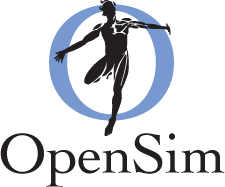Get involved in our efforts to advance rehabilitation science by downloading OpenSim. Since OpenSim was made available to the public in 2007, thousands of students and researchers have used it to perform biomechanical studies. Explore how it can enhance your research and participate in our community, learning from others and sharing your own knowledge.

1. Register with SimTK.org.
Your first step is to register on SimTK.org. OpenSim projects live here, and once registered you will be connected to thousands of like-minded engineers, scientists, and physicians.
2. Download OpenSim.
Next, download the OpenSim software by visiting the OpenSim downloads page. An executable version that can be downloaded and quickly installed is available for Windows. Application program interface (API) versions are available for developers on Windows, MacOS, and Linux.
3. Do the tutorials.
The fastest way to learn OpenSim is by going through the tutorials available on the OpenSim Examples Page:
Tutorial 1: Introduction to Musculoskeletal Modeling
Tutorial 2: Simulation and Analysis of a Tendon Transfer Surgery
Tutorial 3: Scaling, Inverse Kinematics, and Inverse Dynamics
You'll also find a user guide, a developer’s guide, and many other resources for becoming familiar with OpenSim.
4. Deepen your knowledge.
Check out our Support page for information and materials to further advance your use of OpenSim, including:
- New tutorials and examples
- Additional models and simulation data
- A list of upcoming events, including webinars and workshops
5. Join the conversation.
Share your ideas and get answers to your questions through the OpenSim discussion forums.
Create your own project on SimTK.org to easily share your research results. This lets others build upon your work. It’s good for the entire field, and for you personally, it can lead to more citations and collaborations!
You can find more information about creating and managing projects on SimTK.org in the site's Simtk user guide.
Make sure you get the latest news about NCSRR and related projects by signing up for the email newsletter.

